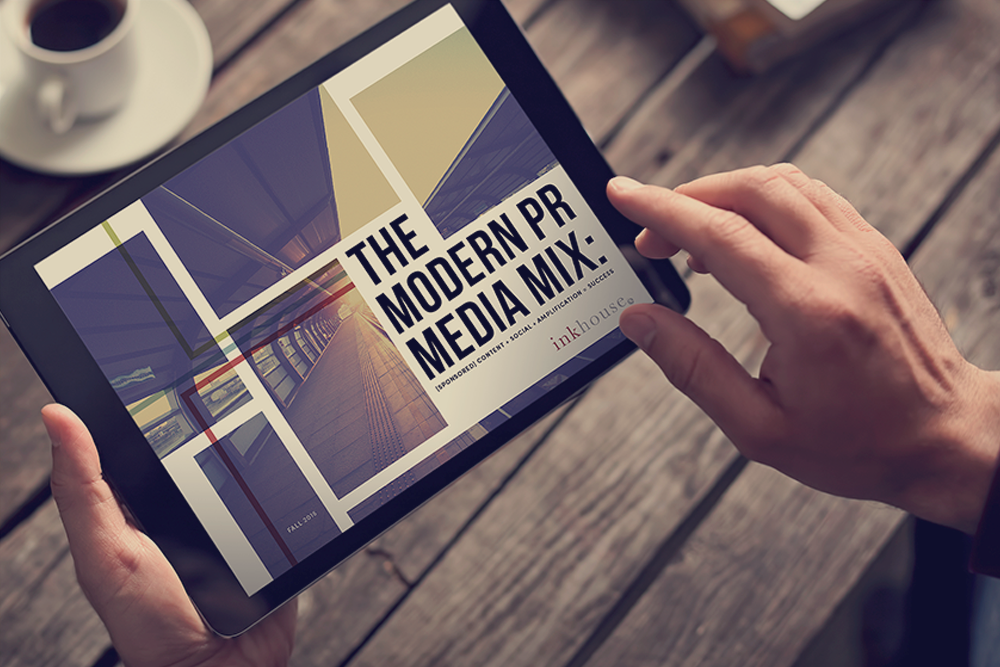Six Ways to Use Sponsored Content as Part of An Integrated PR Strategy
Jun 27, 2017 admin
While earned media is the bread and butter of public relations, there are times when sponsored content makes sense. Most of us understand this in the abstract but in the moment-to-moment frenzy of our day it’s hard to think how the paid approach might be used in a practical way. The reality, however, is that there are many times when sponsored content - especially in targeted industry publications - can be a cost-effective way to get your message out through the media.
There are a few factors driving the adoption of sponsored content. One is the desire, on the part of communications people, to have greater control over the timing and placement of stories. Another is the desire, on the part of publishers, to find new sources of revenue in the face of increasing competition, as well as the increasing use of ad blockers. The sponsored content model helps address legitimate concerns on both sides of the brand/publisher equation.To begin with, let’s set the stage by defining sponsored content. For our purposes it is any editorial content you can pay to place. Sometimes it’s called sponsored content, sometimes native advertising and sometimes (though few agree with this term) advertorial. Virtually every publication accepts some form of this content - from the smallest trade outlet to top-tier ones like the New York Times. The cost of these opportunities, as well, cover a wide range: from under $100 to several hundred thousand dollars.
The process for creating editorial content also comes in several flavors. You may have content that’s already been created that can be used or you may need to create something from scratch. Some publishers prefer to create the content based on a brief from a brand (and with editorial input from the brand) while others take a more collaborative approach.
The output, regardless of the source, needs to take the editorial guidelines of the publication into account and most are very clear about what is and isn’t acceptable. Just because you are paying for the placement doesn’t mean you can necessarily go hog wild with self-promotion. For many audiences, paid placements have a bad rap and abusing the freedom of this approach can reinforce negative stereotypes.
So when does it make sense to use sponsored content to improve campaign performance and outcomes? Here are a few suggestions:
1. Supporting Speaking Opportunities
If you or one of your executives are speaking at a conference, either as a keynote or panelist, then placing a sponsored piece on the topic or perspective being addressed that is timed to appear before the session is a smart idea. When placed in a trade publication and supported with paid social, this can not only increase interest in the specific speaking session but also drive industry conversation around the topic.
2. Structuring a Broader Story
There are times when you may want to tell a complex story that has many moving parts and which no single earned media opportunity will tell completely. Using sponsored content, specific elements of the story can be pulled out and treated independently to help lay the groundwork or to put the broader story into context.
3.Telling Customer Stories (or Having Customers Tell Yours)
We all know what a challenge it is to get customers to agree to participate in publicity or marketing activities; sometimes it’s due to a reluctance to be seen as endorsing a product or service, but often it’s due to a lack of control over what is published. Sponsored content gives you and your customers full control over what is being said and when and where it appears. It can also be written from your customer’s perspective giving all parties both control and third-party validation.
4. Setting the Stage
Whether for a product launch, a new thought leadership campaign or a change in direction for your business, sponsored content allows for the creation a trail of breadcrumbs that, when taken together, help lay the groundwork. Amplified with paid social, this approach can pull the pieces from various publications together and present them as a coherent whole to a specific audience.
5. Telling a Narrow Story
There are times when you may want to tell a very narrowly-focused story to a specific audience. Earned media can certainly accomplish this but, when dealing with a new media channel or audience, it can be faster and easier to pay to place the story. This is especially true if you are dealing with a media outlet with whom you have no relationship or with which you don’t anticipate working with on an ongoing basis.
6. Placing Orphan Content
There are always going to be pieces of content that prove challenging to pitch and place via traditional media relations. This may be because they are seen as too self-serving, of limited interest or not especially timely. You can certainly publish these on your blog, but that doesn’t always have the reach of a third-party publication. In this case sponsored content can breathe more life into a story by putting in in front of a larger - and potentially more engaged - audience.
For many PR people, sponsored content may seem like uncharted waters. It doesn’t need to be. Paid media can be an effective approach to storytelling and needs to be factored into a comprehensive media strategy. For more ideas on how to put sponsored content to work, download our recent eBook, “The Modern PR Media Mix.”






